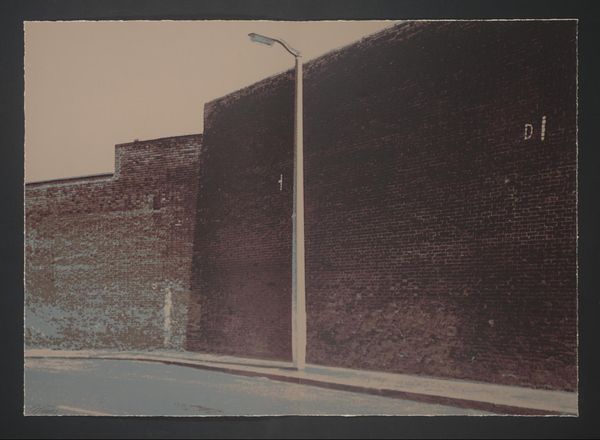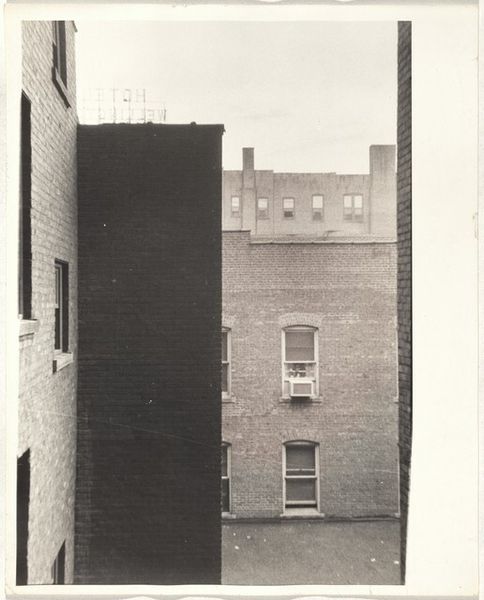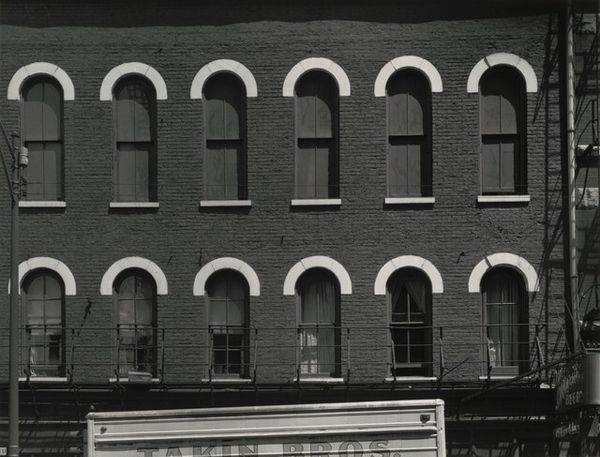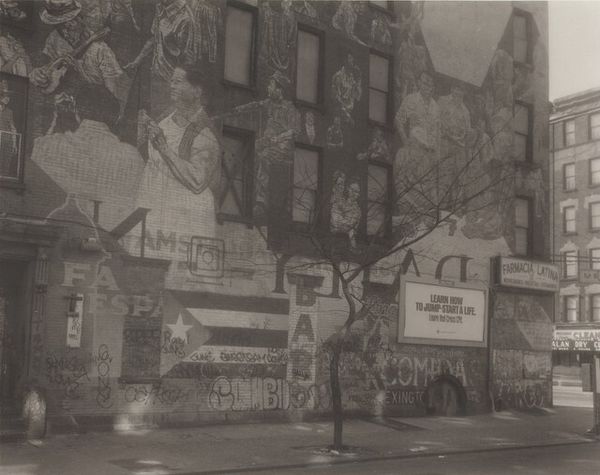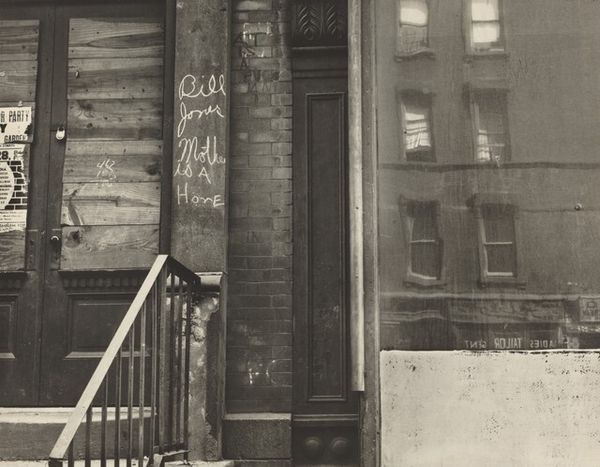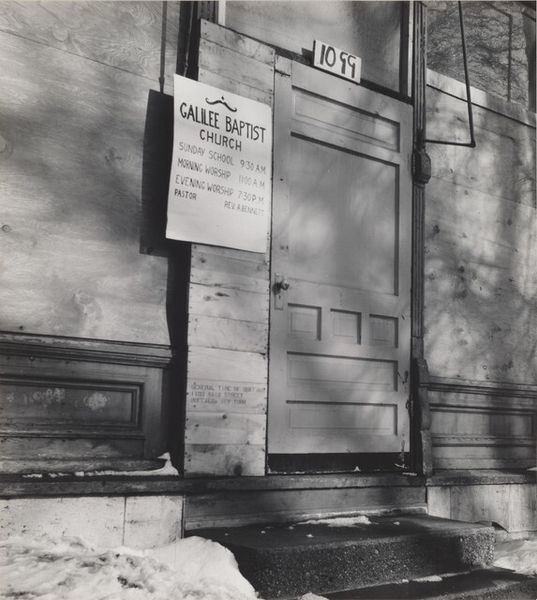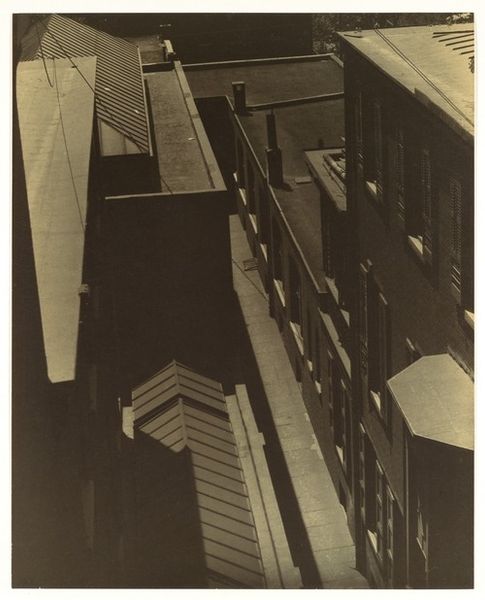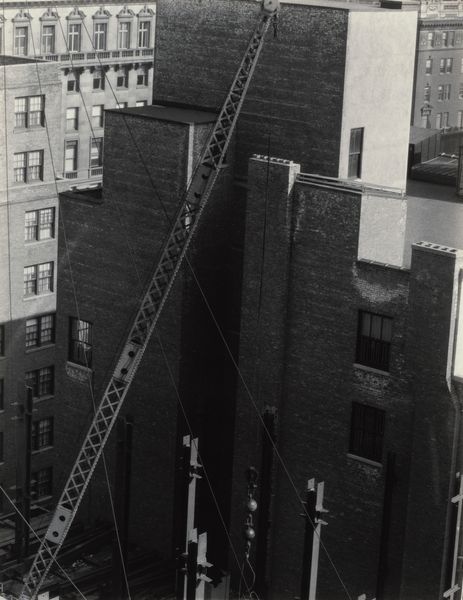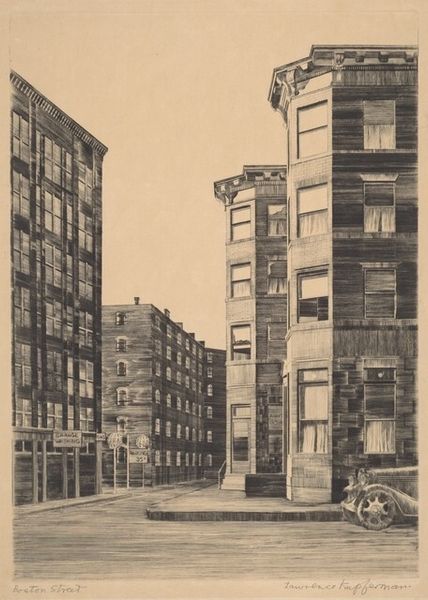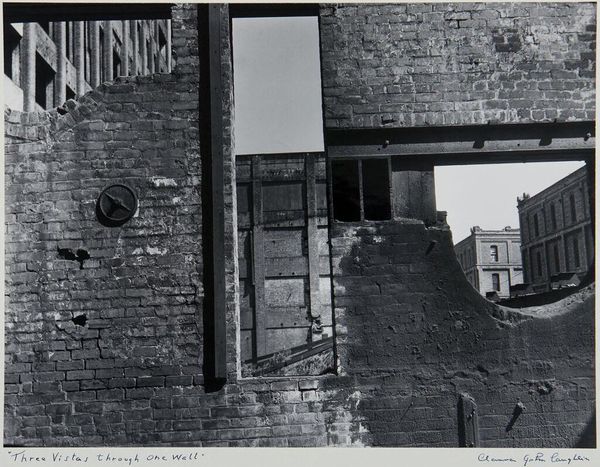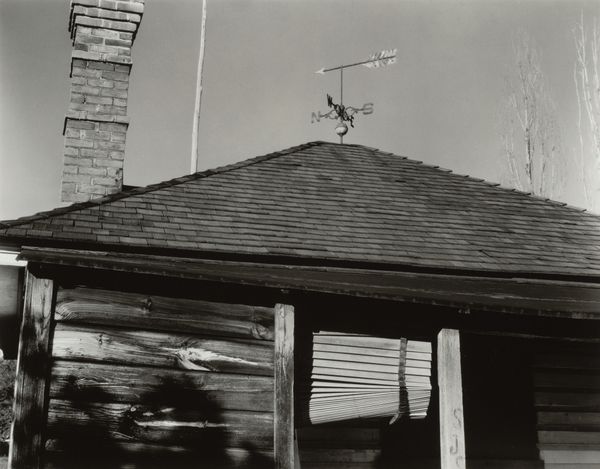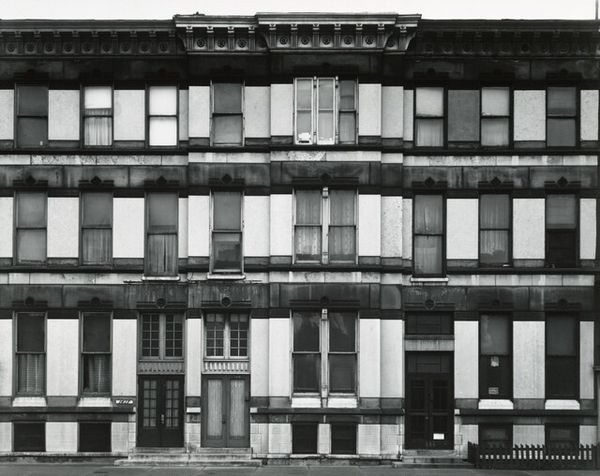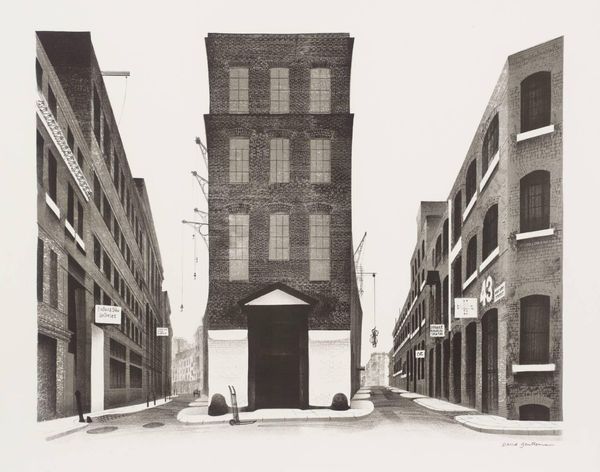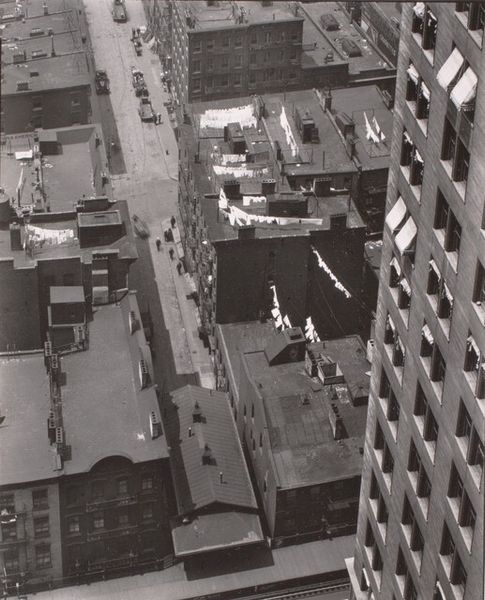
photography
#
black and white photography
#
street shot
#
landscape
#
outdoor photograph
#
black and white format
#
street-photography
#
photography
#
monochrome photography
#
ashcan-school
#
realism
Dimensions: image/sheet: 10 × 8 cm (3 15/16 × 3 1/8 in.) mount: 12.5 × 10.25 cm (4 15/16 × 4 1/16 in.)
Copyright: National Gallery of Art: CC0 1.0
Editor: Here we have "This Year Ride a Bicycle" by Ralph Steiner. The exact date is uncertain, somewhere between 1924 and 1981. It’s a black and white photograph of what seems to be an urban street scene. I'm immediately drawn to the textures and the sharp angles. What stands out to you as you look at this piece? Curator: For me, this image speaks volumes about the material conditions of urban life. Steiner's focus isn't just on the aesthetic, but on the constructed environment itself. Look at the weathered clapboard of the buildings, the functional lines of the fire escape. These are the materials that shape daily existence. Even the washing line strung between buildings hints at domestic labor and the everyday struggles of working-class families. Editor: That’s a fascinating perspective. I initially saw it more as a study in form, the juxtaposition of geometric shapes, but now I'm noticing the nuances in the textures. How does the photograph’s message interact with consumerism as conveyed by the advertising sign? Curator: That’s precisely the tension Steiner is exploring! The commodification of leisure – "This Year Ride a Bicycle" – clashes directly with the realities of the urban landscape. We must consider the materials used to create the advert compared to the materiality of the neighborhood and to ask questions about consumption and value. What social class do the different types of material reflect? Does Steiner believe everyone will be riding a bike or just an affluent few? Editor: It really forces you to think about who has access to that leisure. Are you suggesting it critiques the societal disparities reflected by material surroundings? Curator: Exactly! It is less a simple endorsement and more a complex commentary on the promises of consumer culture against the backdrop of lived realities. Steiner makes visible how such social class disparities materialize into one’s surroundings. Editor: I never would have looked at it this way without considering it in the materialist sense. I initially assumed the materials were a neutral part of the scene. Curator: It’s about acknowledging that materials aren’t neutral. They tell stories of labor, production, and power. Now when I see pictures of the city I am going to notice its inequalities.
Comments
No comments
Be the first to comment and join the conversation on the ultimate creative platform.
